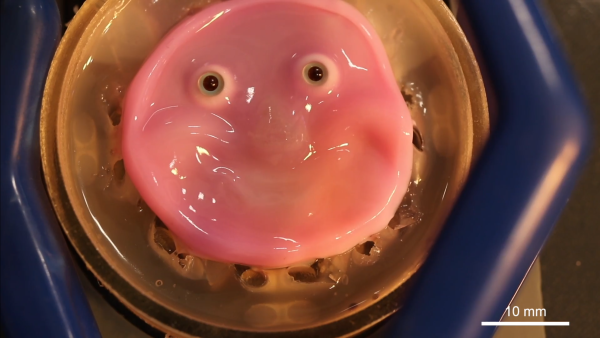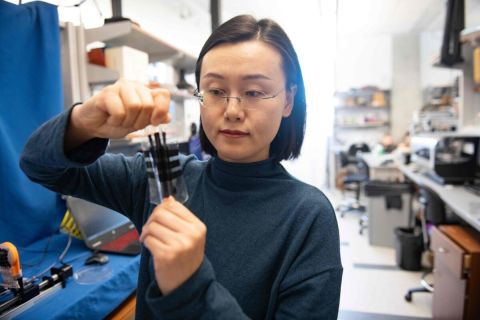ALBAWABA - A method has been developed by Japanese researchers at Tokyo University to affix live human skin on robotic faces, enabling more lifelike smiles along with various realistic facial movements, saying that their accomplishment was made possible by accurately replicating human tissue architecture.
The live cell tissue comprises a mixture of cultivated human skin cells that have been grown in a matrix of collagen and layered on a resin substrate that has been 3D printed.
In contrast to earlier studies of a similar kind, the skin also has the analogue of the ligaments seen in the subcutaneous tissue of humans and other animals, which serve to keep the skin in place and provide it with extraordinary durability and adaptability, according to NewScientist.
These analogues of ligaments are known as "perforation-type anchors," according to Michio Kawai, who worked at the research from Tokyo University, and his colleagues at Harvard University. This is because the robot's resin foundation is punctured during their development, allowing live tissue to be injected into tiny v-shaped spaces. As such, this system contributes to the locking of the robotic skin.
Prof Shoji Takeuchi, lead researcher on the project said that “the natural flexibility of the skin and the strong method of adhesion mean the skin can move with the mechanical components of the robot, without tearing or peeling away.”
Not only is it soft, much like real skin, but it can heal itself if it is damaged, the scientists said as reported by BBC, arguing that it opens the way for the creation of convincingly lifelike, active humanoids featuring skin that can mend itself and is not easily ripped or torn.
Takeuchi adds on the future of the technology that “another important challenge is creating human-like expressions by integrating sophisticated actuators, or muscles, inside the robot,” believing that the initiative could help skin aging, cosmetics, and surgery studies.








